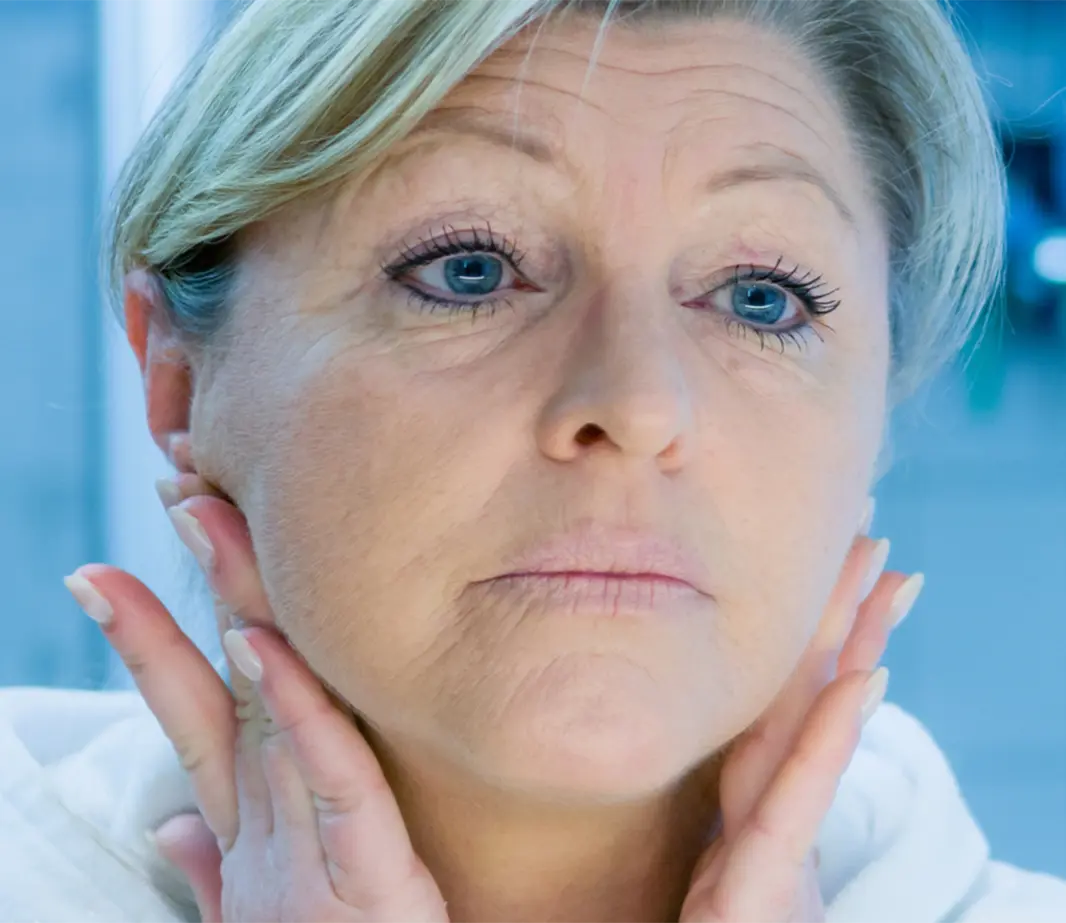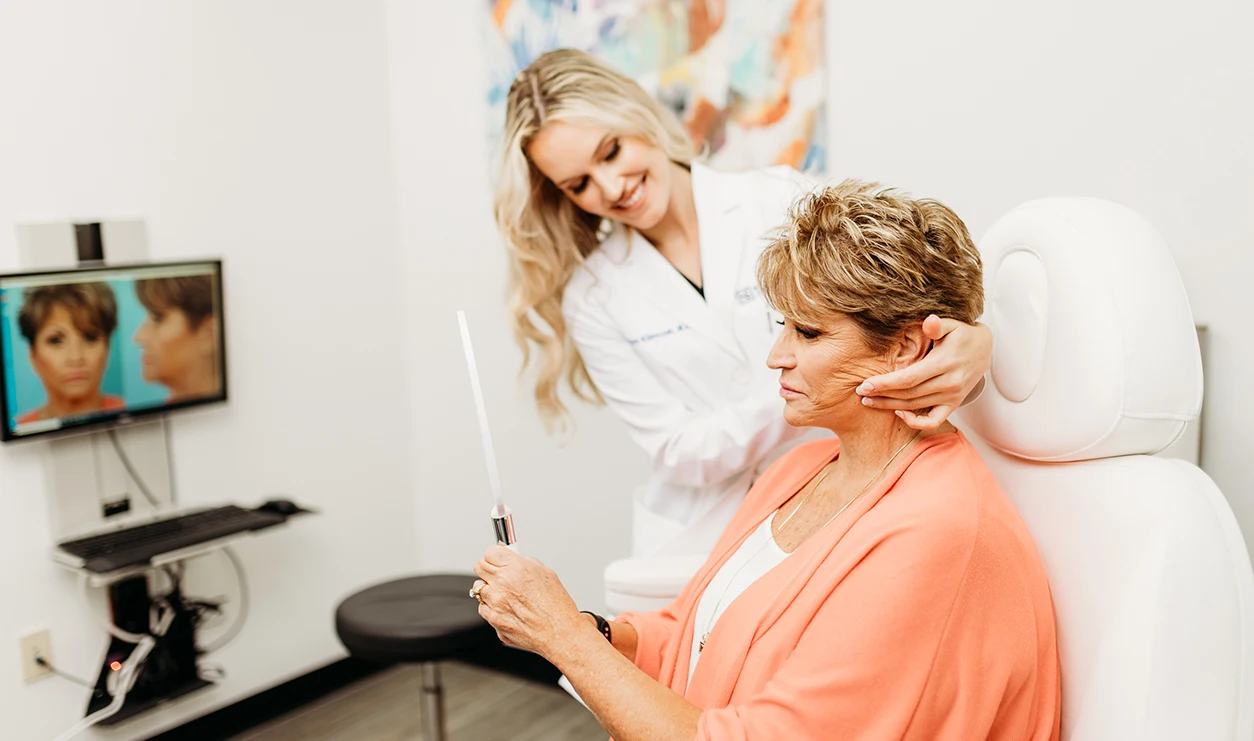
Our patient results enhance their natural beauty.
Aging brings changes that can impact the definition and appearance of your neck. If you desire a more youthful neckline, consider the potential of a neck lift. Our surgeons, Dr. Nachlas and Dr. Hancock’s neck lift surgery reduce sagging skin and bands in the neck area for a more graceful contour.

A neck lift is an outpatient procedure that tightens sagging skin and muscles along the neck. It reduces excess fat, and redefines the jawline, combating the signs of aging like “turkey neck” and double chin.
The best candidates for a neck lift experience signs of aging like sagging skin and muscle laxity. Our surgeons assess the following criteria during consultations:
After the neck lift procedure, your neck and head may be bandaged. Your neck may feel tight and sore and you may experience some mild to moderate discomfort, which can typically be managed with prescription or over-the-counter medication.
Some patients also experience temporary numbness around the incision. You will likely experience some swelling and bruising and these side effects will begin to improve within a few days. Keeping your head and neck elevated will help to alleviate the swelling. Many patients find they can return to work and social activities after approximately 10-14 days of recovery.
Experience profound improvements in your appearance and facial profile with minimal downtime.
While neck lift surgery is generally safe, patients may experience temporary side effects such as numbness around the incision sites, discomfort, swelling, and bruising. Potential risks include:
Choose widely published and award-winning NSIBR surgeons for your neck lift surgery and experience the difference in quality, care, and results. Schedule your consultation today to begin your journey to a rejuvenated and refreshed neck profile.
Conveniently located in Boca Raton, our ENT doctors serve Boca Raton and all surrounding communities in Palm Beach and Broward Counties
The cost of a neck lift can vary depending on several factors, including the surgeon’s expertise, facility fees, anesthesia, and the extent of the procedure required to achieve the desired results. For an accurate estimate, it’s best to schedule a neck lift consultation with our NSIBR surgeons in Boca Raton.
Neck lift scars are strategically placed in inconspicuous locations, such as behind the ears or under the chin, to minimize their visibility. With proper care and healing, these scars typically fade over time and become less noticeable, resulting in a smoother and rejuvenated neck appearance.
Neck lift surgery is only one tool that can help restore your overall facial appearance. Many patients with facial aging combine procedures to ensure they gain a comprehensive rejuvenation of their appearance. Dr. Hancock and Dr. Nachlas may also recommend additional surgical or non-surgical procedures that combine well with a neck lift. These other procedures include:
The procedures may be performed with or without neck lift surgery.
Take charge of your life today! Call us or submit an online form, and you will be speaking with one of our talented surgeons in no time.
(561) 939-7352